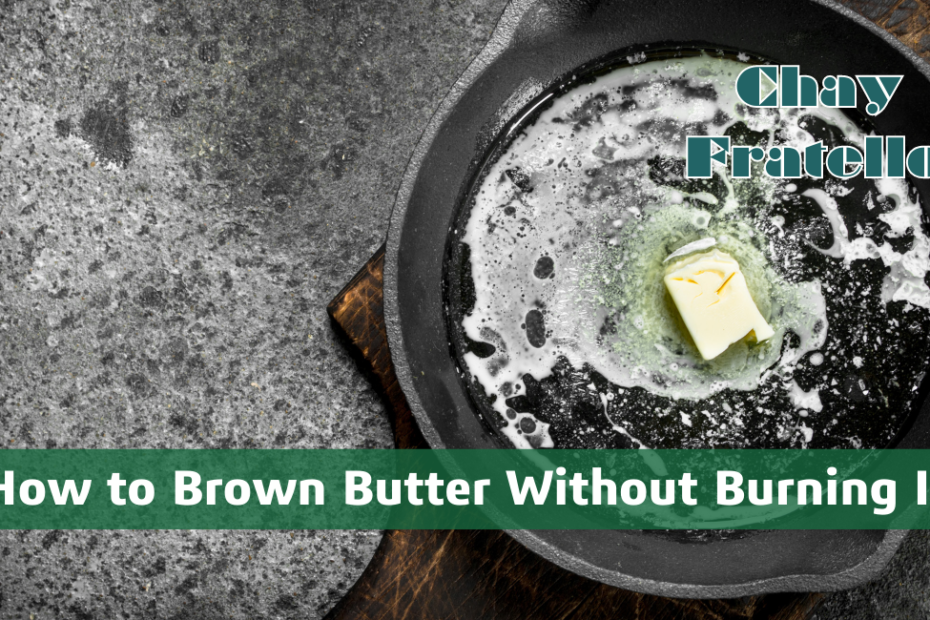If you enjoy baking or cooking, you’ve probably come across recipes that call for browned butter instead of regular butter. But what does this imply, and how can you achieve it? Browning butter imparts a toasted, nutty flavor to recipes that regular butter does not. Brown butter can be used in almost any dish but is especially popular in pasta dishes, sauces, and baked goods.
When you heat butter in a skillet or pan, the milk solids begin to separate from the fat and fall to the bottom. These milk solids then start to cook and turn brown—and presto! You have perfectly browned butter.
The only issue that people have is that it is very easy to burn your butter as you try to brown it lightly. Browning butter is a simple, quick cooking technique, but it can be easier said than done. A sloppy touch can result in a skillet of burned butter, frustrating many a home chef.
We sought advice from Tiffany Swan, founder of multipurpose culinary platform Salt & Sage, chef, and food scientist, to help you avoid this fate. Swan, who has worked in professional and development kitchens for over 25 years, shared some of her best tips for browning butter correctly. Here’s how she makes nutty, flavorful browned butter without burning it.
Use a stainless steel Saucepan
Begin by browning your butter in a stainless steel pan to get things started.
Stainless steel allows you to see the color in the pan’s bottom, whereas nonstick hides browning. The sides of the saucepan also allow bubbles to form with little concern.
Control the heat
Controlling the heat is essential for browning butter without burning it. Keep an eye on the stove and your butter pats as they melt.
Melt the butter over medium heat, about a 4 or 5 on a scale of 1-10. If your butter begins to melt too quickly or moves too slowly, adjust the heat as needed.
Don’t walk away
Browning butter is a quick and easy process that requires your full attention. As a result, Swan believes that now is not the time to step away and complete other cooking tasks.
When the water in the butter begins to boil off, bubbles will form. This is when things become dangerous because water protects against burning. So, when you see the bubbles, stay put and watch the butter. Then, swirl it around to see what’s going on at the bottom of the pan, or get rid of any out-of-control bubbles.
Use your nose
You can rely on your senses to guide you as you cook. For example, when browning butter, the smell will tell you when it’s ready.
Browning occurs when the protein solids react with the sugar and heat present, similar to how grill marks appear on a steak. It will begin to smell nutty and delicious at this point. When you smell this aroma, the bubbles are probably dying, and it’s time to take it off the heat.
Place the butter in a separate dish
When your butter has successfully browned, you should turn off the burner and remove the butter from the pan. This is an important step because the pan is hot, as is the butter fat in the pan. As a result, the solids will continue to cook, resulting in burned butter.
As you remove the butter from the heat, place it in a dish that can cool without continuing to cook.
Learn more: 9 Best Mediterranean Diet Breakfast Food
